How much electricity an electric boiler consumes: how to make calculations before buying
The use of electricity as an energy source for heating a country house is attractive for many reasons: easy accessibility, prevalence, environmental friendliness. At the same time, rather high tariffs remain the main obstacle to the use of electric boilers.
Have you also thought about the advisability of installing an electric boiler? Let's see together how much electricity an electric boiler consumes. Why we will use the rules for performing calculations and formulas discussed in our article.
Calculations will help to understand in detail how much kW of electricity will have to be paid monthly if an electric boiler is used to heat a house or apartment. The resulting figures will allow you to make a final decision about the purchase / not buying a boiler.
The content of the article:
- Methods for calculating the power of an electric boiler
- The procedure for calculating the power of an electric boiler
- Stage # 1 - collection of initial data for calculation
- Stage # 2 - calculation of heat loss of the floor of the basement
- Stage # 3 - calculation of the heat loss of the ceiling
- Stage # 4 - calculation of the total heat loss of the cottage
- Stage # 5 - Calculation of Electricity Costs
- Stage # 6 - calculation of seasonal heating costs
- Conclusions and useful video on the topic
Methods for calculating the power of an electric boiler
Two main methods can be distinguished for calculating the required power of an electric boiler. The first is based on the heated area, the second on the calculation of heat loss through the building envelope.
The calculation according to the first option is very rough, based on a single indicator - specific power. Specific power is given in reference books and depends on the region.
The calculation according to the second option is more complicated, but takes into account many individual indicators of a particular building. Full thermal engineering calculation of the building is a rather complicated and painstaking task. A simplified calculation will be considered below, which nevertheless possesses the necessary accuracy.
Regardless of the calculation method, the quantity and quality of the collected source data directly affect the correct assessment of the required power of the electric boiler.
With low power, the equipment will constantly work with maximum load, not providing the desired comfort of living. With excessive power - unreasonably high energy consumption, high cost of heating equipment.
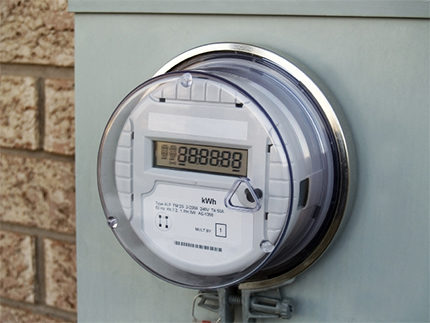
The procedure for calculating the power of an electric boiler
Next, we will consider in detail how to calculate the necessary boiler power so that the equipment fully fulfills its task of heating the house.
Stage # 1 - collection of initial data for calculation
For the calculations you will need the following information about the building:
- S - area of the heated room.
- Wbeats - specific power.
The specific power indicator shows how much thermal energy is needed per 1 m2 at 1 o’clock.
Depending on local environmental conditions, the following values can be accepted:
- for the central part of Russia: 120 - 150 W / m2;
- for southern regions: 70-90 W / m2;
- for northern regions: 150-200 W / m2.
Wbeats - Theoretical value, which is used mainly for very rough calculations, because it does not reflect the real heat loss of the building. Does not take into account the area of glazing, the number of doors, the material of the external walls, the height of the ceilings.
Accurate heat engineering calculation is carried out using specialized programs taking into account many factors. For our purposes, such a calculation is not needed, it is quite possible to get by calculating the heat losses of the external enclosing structures.
Values to be used in the calculations:
R - heat transfer resistance or heat resistance coefficient. This is the ratio of the temperature difference along the edges of the enclosing structure to the heat flux passing through this structure. It has a dimension m2×⁰С / W.
In fact, everything is simple - R expresses the ability of a material to retain heat.
Q - a value showing the amount of heat flow passing through 1 m2 surface at a temperature difference of 1⁰C for 1 hour. That is, it shows how much heat is losing 1 m2 building envelope per hour at a temperature drop of 1 degree. Has a dimension of W / m2×h
For the calculations given here, there is no difference between kelvins and degrees Celsius, since it is not the absolute temperature that matters, but only the difference.
Qtotal - the amount of heat flow passing through the area S of the building envelope per hour. It has a dimension of W / h.
P - power of the heating boiler. It is calculated as the required maximum power value of the heating equipment with the maximum temperature difference between the outdoor and indoor air. In other words, sufficient boiler power to heat the building during the coldest season. It has a dimension of W / h.
Efficiency - the efficiency of the heating boiler, a dimensionless quantity showing the ratio of energy received to energy expended. The documentation for the equipment is usually given as a percentage of 100, for example 99%. In calculations, a value from 1 i.e. 0.99.
∆T - shows the temperature difference on both sides of the building envelope. To make it clearer how the difference is calculated correctly, see an example. If outside: -30 °C, and inside +22 ° C, then ∆T = 22 - (-30) = 52 ° С
Or, too, but in kelvin: ∆T = 293 - 243 = 52K
That is, the difference will always be the same for degrees and kelvins, therefore, for calculations, the reference data in kelvins can be used without corrections.
d - thickness of the building in meters.
k - coefficient of thermal conductivity of the material of the building envelope, which is taken from the reference books or Construction Norms and Regulations II-3-79 "Construction Heat Engineering" (Construction Norms and Regulations - construction norms and rules). It has a dimension of W / m × K or W / m × ⁰C.
The following list of formulas shows the relationship between the quantities:
- R = d / k
- R = ∆T / Q
- Q = ∆T / R
- Qtotal = Q × S
- P = qtotal / Efficiency
For multilayer structures, the heat transfer resistance R is calculated separately for each structure and then added up.
Sometimes the calculation of multilayer structures can be too cumbersome, for example, when calculating the heat loss of a glass window.
What you need to consider when calculating heat transfer resistance for windows:
- glass thickness;
- the number of glasses and air gaps between them;
- type of gas between the glasses: inert or air;
- the presence of thermal insulation coating of window glass.
However, you can find ready-made values for the entire structure either from the manufacturer or in the directory, at the end of this article is a table for double-glazed windows of a common design.
Stage # 2 - calculation of heat loss of the floor of the basement
Separately, it is necessary to dwell on the calculation of heat loss through the floor of the building, since the soil has significant resistance to heat transfer.
When calculating the heat loss of the basement, you need to take into account the deepening into the ground. If the house is at ground level, then the depth is assumed to be 0.
According to the generally accepted technique, the floor area is divided into 4 zones.
- 1 zone - 2 meters back from the outer wall to the center of the floor around the perimeter. In case of deepening of the building, it deviates from the ground level to the floor level along a vertical wall. If the wall is 2 m deep in the ground, then zone 1 will be completely on the wall.
- 2 zone - retreats 2 m around the perimeter to the center from the border of 1 zone.
- 3 zone - retreats 2 m around the perimeter to the center from the border of 2 zones.
- 4 zone - remaining floor.
For each zone from established practice, its own Rs are set:
- R1 = 2.1 m2×° C / W;
- R2 = 4.3 m2×° C / W;
- R3 = 8.6 m2×° C / W;
- R4 = 14.2 m2×° C / W.
The given R values are valid for uncoated floors. In the case of insulation, each R increases by R of the insulation.
Additionally, for floors laid on logs, R is multiplied by a factor of 1.18.

Stage # 3 - calculation of the heat loss of the ceiling
Now you can proceed with the calculations.
A formula that can serve as a rough estimate of the power of an electric boiler:
W = wbeats × S
Objective: to calculate the necessary boiler capacity in Moscow, the heated area of 150 m².
When making calculations, we take into account that Moscow belongs to the central region, i.e. Wbeats can be taken equal to 130 W / m2.
Wbeats = 130 × 150 = 19500W / h or 19.5kW / h
This figure is so inaccurate that it does not require taking into account the efficiency of heating equipment.
Now we determine the heat loss through 15m2 the area of the ceiling insulated with mineral wool. The thickness of the insulation layer is 150 mm, the outdoor temperature is -30 ° C, inside the building +22 ° C for 3 hours.
Solution: according to the table we find the thermal conductivity coefficient of mineral wool, k = 0.036 W / m×° C. Thickness d must be taken in meters.
The calculation procedure is as follows:
- R = 0.15 / 0.036 = 4.167 m2×° C / W
- ∆T = 22 - (-30) = 52 ° С
- Q = 52 / 4,167 = 12,48 W / m2× h
- Qtotal = 12,48 × 15 = 187 Wh / h.
We calculated that the heat loss through the ceiling in our example will be 187 * 3 = 561W.
For our purposes, it is quite possible to simplify the calculations, calculating the heat loss only of the external structures: walls and ceilings, without paying attention to the internal partitions and doors.
In addition, you can do without calculating the heat loss for ventilation and sewage. We will not take into account infiltration and wind load. Dependence of the location of the building on the cardinal points and the amount of received solar radiation.
From general considerations, one conclusion can be drawn. The larger the building, the less heat loss per 1 m2. This is easy to explain, since the area of the walls increases quadratically, and the volume in the cube.The ball has the least heat loss.
In enclosing structures only closed air layers are taken into account. If your house has a ventilated facade, then such an air layer is considered not closed, it is not taken into account. Do not take all the layers that follow in front of an open air layer: facade tiles or cassettes.
Closed air layers, for example, in double-glazed windows are taken into account.
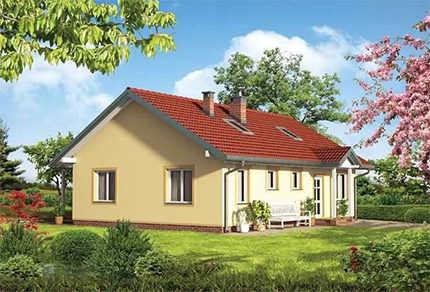
Stage # 4 - calculation of the total heat loss of the cottage
After the theoretical part, you can proceed to the practical.
For example, we calculate the house:
- dimensions of external walls: 9x10 m;
- height: 3 m;
- window with a double-glazed window 1,5×1.5 m: 4 pcs;
- oak door 2.1×0.9 m, thickness 50 mm;
- pine floors of 28 mm, over extruded polystyrene with a thickness of 30 mm, laid on logs;
- GKL ceiling of 9 mm, over mineral wool 150 mm thick;
- wall material: masonry 2 silicate bricks, mineral wool insulation 50 mm;
- the coldest period is 30 ° С, the calculated temperature inside the building is 20 ° С.
We will carry out preparatory calculations of the required areas. When calculating the zones on the floor, we take the zero deepening of the walls. The floor board is laid on the logs.
- windows - 9 m2;
- door - 1.9 m2;
- walls, minus windows and doors - 103.1 m2;
- ceiling - 90 m2;
- area of floor zones: S1 = 60 m2, S2 = 18 m2, S3 = 10 m2, S4 = 2 m2;
- ΔT = 50 ° C.
Further, according to reference books or tables given at the end of this chapter, we select the necessary values of the thermal conductivity coefficient for each material. We recommend that you read in more detail with thermal conductivity coefficient and its values for the most popular building materials.
For pine boards, the thermal conductivity should be taken along the fibers.
The whole calculation is quite simple:
Step # 1: The calculation of heat loss through load-bearing wall structures involves three steps.
We calculate the coefficient of heat loss of the walls of the brickwork: RCyrus = d / k = 0.51 / 0.7 = 0.73 m2×° C / W.
The same for wall insulation: Rut = d / k = 0.05 / 0.043 = 1.16 m2×° C / W.
Heat loss 1 m2 external walls: Q = ΔT / (RCyrus + Rut) = 50 / (0,73 + 1,16) = 26,46 m2×° C / W.
As a result, the total heat loss of the walls will be: Qst = Q × S = 26.46 × 103.1 = 2728 W / h.
Step number 2: Calculation of heat loss through windows: Qthe window = 9 × 50 / 0.32 = 1406W / h.
Step number 3: Calculation of thermal energy leakage through an oak door: Qdv = 1.9 × 50 / 0.23 = 413W / h.
Step 4: Heat loss through the upper ceiling - ceiling: Qsweat = 90 × 50 / (0.06 + 4.17) = 1064W / h.
Step number 5: We calculate Rut for the floor also in several actions.
First, we find the coefficient of heat loss of the insulation: Rut= 0,16 + 0,83 = 0,99 m2×° C / W.
Then add Rut to each zone:
- R1 = 3.09 m2×° C / W; R2 = 5.29 m2×° C / W;
- R3 = 9.59 m2×° C / W; R4 = 15.19 m2×° C / W.
Step 6: Since the floor is laid on the logs, multiply by a factor of 1.18:
R1 = 3.64 m2×° C / W; R2 = 6.24 m2×° C / W;
R3 = 11.32 m2×° C / W; R4 = 17.92 m2×° C / W.
Step number 7: We calculate Q for each zone:
Q1 = 60 × 50 / 3.64 = 824W / h;
Q2 = 18 × 50 / 6.24 = 144W / h;
Q3 = 10 × 50 / 11.32 = 44W / h;
Q4 = 2 × 50 / 17.92 = 6W / h.
Step number 8: Now you can calculate Q for the entire gender: Qfloor = 824 + 144 + 44 + 6 = 1018W / h.
Step 9: As a result of our calculations, we can designate the sum of the total heat loss:
Qtotal = 2728 + 1406 + 413 + 1064 + 1018 = 6629W / h.
The calculation did not include heat losses associated with sewage and ventilation. In order not to complicate beyond measure, just add 5% to the listed leaks.
Of course, a margin of at least 10% is needed.
Thus, the final heat loss figure of an example home is:
Qtotal = 6629 × 1.15 = 7623W / h.
Qtotal shows the maximum heat loss at home when the temperature difference between the external and internal air is 50 ° C.
If you count according to the first simplified version through Wud then:
Wbeats = 130 × 90 = 11700W / h.
It is clear that the second version of the calculation is even more complicated, but it gives a more realistic figure for buildings with insulation. The first option allows you to get a generalized value of heat loss for buildings with a low degree of thermal insulation or without it at all.
In the first case, the boiler will have to completely renew every hour the loss of thermal energy occurring through openings, floors, walls without insulation.
In the second case, it is necessary to heat only one time before reaching a comfortable temperature.Then the boiler will only need to restore heat loss, the magnitude of which is significantly lower than the first option.
Table 1. Thermal conductivity of various building materials.
Table 2. The thickness of the cement joint for various types of masonry.
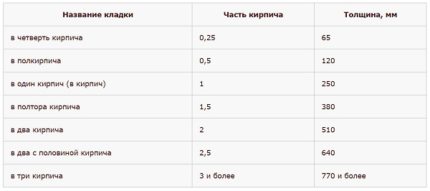
Table 3. Thermal conductivity of various types of mineral wool slabs.

Table 4. Heat losses of windows of various designs.

7.6 kW / h is the estimated maximum required power that is spent on heating a well-insulated building. However, electric boilers for work also need some charge for their own power.
As you noticed a poorly insulated house or apartment will require large amounts of electricity for heating. And this is true for any type of boiler. Proper insulation of the floor, ceiling and walls can significantly reduce costs.
On our site there are articles on insulation methods and rules for choosing a heat-insulating material. We suggest you familiarize yourself with them:
- Insulation of a private house outside: popular technologies + material review
- Floor insulation by logs: materials for thermal insulation + insulation schemes
- Attic roof insulation: a detailed instruction on the installation of thermal insulation in the attic of a low-rise building
- Types of insulation for the walls of the house from the inside: materials for insulation and their characteristics
- Insulation for the ceiling in a private house: types of materials used + how to choose the right
- Do-it-yourself warming the balcony: popular options and technologies for warming the balcony from the inside
Stage # 5 - Calculation of Electricity Costs
If you simplify the technical essence of a heating boiler, you can call it a conventional converter of electrical energy into its thermal analogue. Performing the conversion work, he also consumes a certain amount of energy. Those. the boiler receives a full unit of electricity, and only 0.98 of its part is supplied for heating.
To obtain an accurate figure of the energy consumption by the electric heating boiler under study, it is necessary to divide its power (rated in the first case and calculated in the second) by the efficiency value declared by the manufacturer.
The average efficiency of such equipment is 98%. As a result, the energy consumption will be, for example, for the calculation option:
7.6 / 0.98 = 7.8 kW / h.
It remains to multiply the value by the local tariff. Then calculate the total cost of electric heating and start looking for ways to reduce them.
For example, buy a two-tariff meter that allows you to partially pay at lower "night" tariffs. Why do you need to replace the old electricity meter with a new model. The procedure and rules for replacing in detail reviewed here.
Another way to reduce costs after replacing the meter is to include a thermal accumulator in the heating circuit in order to stock up cheap energy at night and spend it in the daytime.
Stage # 6 - calculation of seasonal heating costs
Now that you have mastered the method of calculating future heat loss, you can easily estimate the cost of heating during the entire heating period.
According to SNiP 23-01-99 “Construction Climatology” in columns 13 and 14 we find for Moscow the duration of the period with an average temperature below 10 ° C.
For Moscow, this period lasts 231 days and has an average temperature of -2.2 ° C. To calculate Qtotal for ΔT = 22.2 ° С, it is not necessary to perform the whole calculation anew.
It is enough to print Qtotal 1 ° C:
Qtotal = 7623/50 = 152.46 W / h
Accordingly, for ΔT = 22.2 ° C:
Qtotal = 152.46 × 22.2 = 3385W / h
To find the consumed electricity, we multiply by the heating period:
Q = 3385 × 231 × 24 × 1.05 = 18766440W = 18766kW
The above calculation is also interesting because it allows you to analyze the entire structure of the house from the point of view of the effectiveness of the use of insulation.
We considered a simplified version of the calculations. We recommend that you also familiarize yourself with the full thermal engineering calculation of the building.
Conclusions and useful video on the topic
How to avoid heat loss through the foundation:
How to calculate heat loss online:
The use of electric boilers as the main heating equipment is very limited by the capabilities of electric networks and the cost of electricity.
However, as an additional, for example to solid fuel boilercan be quite effective and useful. They can significantly reduce the time for heating the heating system or be used as the main boiler at not very low temperatures.
Do you use an electric boiler for heating? Tell us by what method you calculated the necessary power for your home. Or maybe you just want to buy an electric boiler and you have questions? Ask them in the comments to the article - we will try to help you.

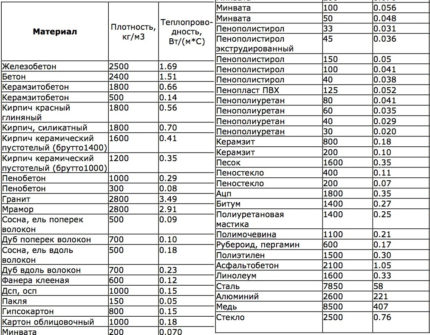
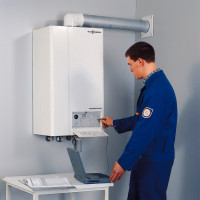 How to calculate the power of a gas heating boiler: formulas and calculation example
How to calculate the power of a gas heating boiler: formulas and calculation example  Calculation of the heating system of a private house: rules and examples of calculation
Calculation of the heating system of a private house: rules and examples of calculation 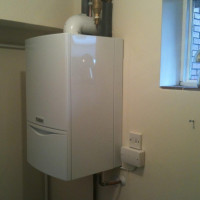 Is it possible to install a gas boiler in the bathroom: rules and regulations
Is it possible to install a gas boiler in the bathroom: rules and regulations 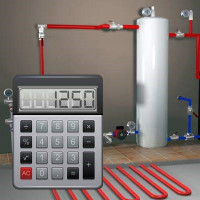 The average gas consumption for heating a house is 150 m²: an example of calculations and an overview of heat engineering formulas
The average gas consumption for heating a house is 150 m²: an example of calculations and an overview of heat engineering formulas 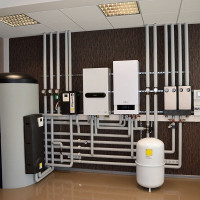 Thermal calculation of a heating system: how to correctly calculate the load on a system
Thermal calculation of a heating system: how to correctly calculate the load on a system 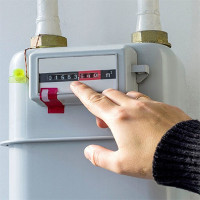 Gas consumption for heating a house 200 m²: determination of costs when using main and bottled fuel
Gas consumption for heating a house 200 m²: determination of costs when using main and bottled fuel  How much does it cost to connect gas to a private house: the price of organizing gas supply
How much does it cost to connect gas to a private house: the price of organizing gas supply  The best washing machines with dryer: model rating and customer tips
The best washing machines with dryer: model rating and customer tips  What is the color temperature of light and the nuances of choosing the temperature of the lamps to suit your needs
What is the color temperature of light and the nuances of choosing the temperature of the lamps to suit your needs  Replacement of a geyser in an apartment: replacement paperwork + basic norms and requirements
Replacement of a geyser in an apartment: replacement paperwork + basic norms and requirements
I don’t know what to choose - an electric or gas boiler. Gas is cheaper than electricity is obtained, but there is still a lot to pay for the tie-in, and get paper to run.
If a gas highway passes through the village, then it is definitely a gas one. It pays off pretty quickly. As for design, the Internet is now full of step-by-step manuals, and if you don’t feel like running around yourself, you can turn to intermediary firms.